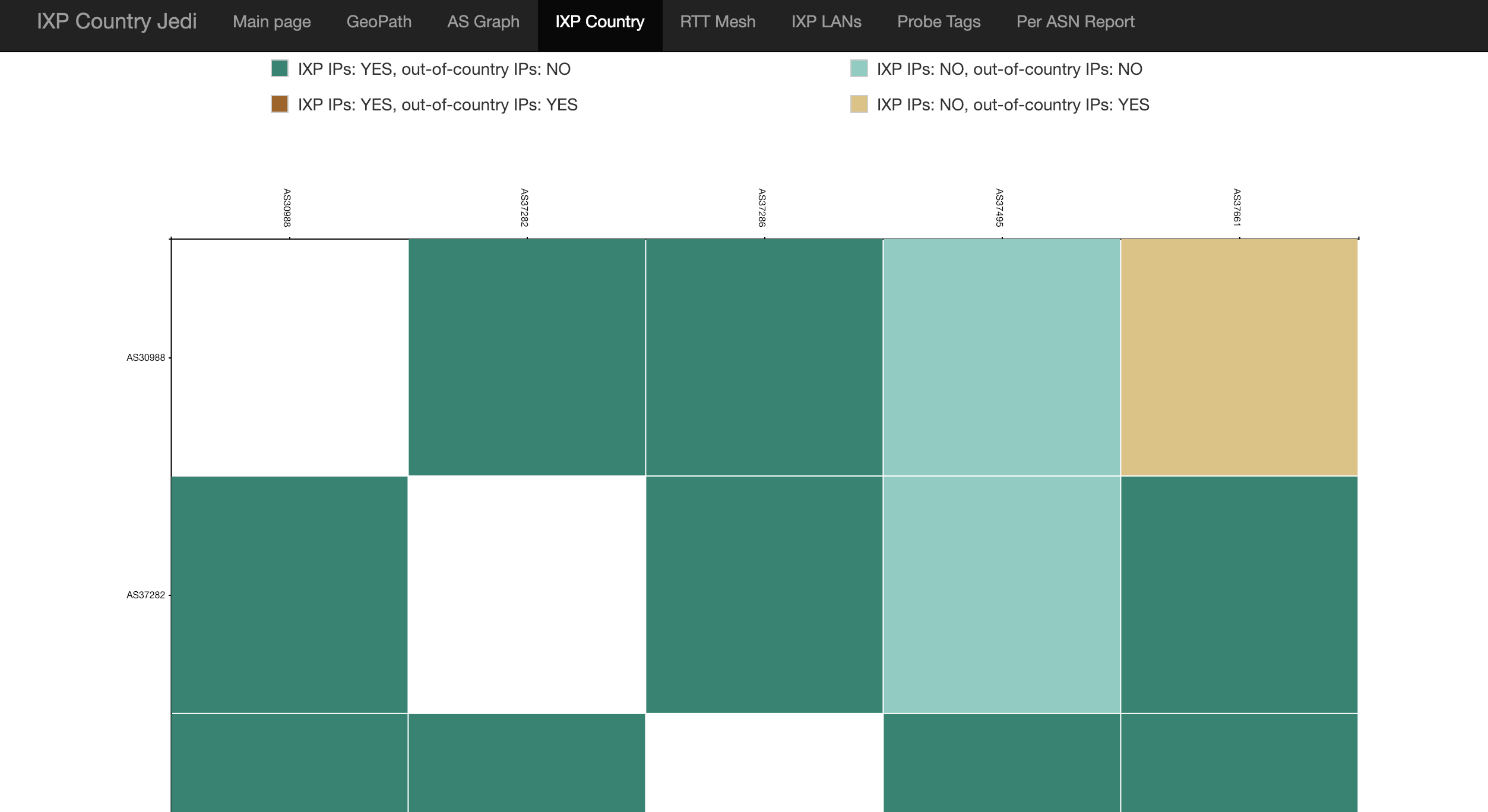In order to ensure that the African Internet benefit from the performance measurement platforms being deployed by a number of companies and institutions across the globe, AFRINIC signed a Memorandum of Understanding (MoU) in 2013 with one of the leading Internet measurement platform providers, the RIPE NCC. This partnership was established in an effort by AFRINIC to build a large measurement network in Africa and to continuously analyse interconnectivity and internetworking across the continent. The MoU enables AFRINIC to join the RIPE NCC’s effort in building a global network of probes and anchors known as the RIPE ATLAS project. AFRINIC has, since the MoU, distributed 192 probes and sponsored six anchors and these devices are installed in different parts of the continent. Five of these anchors were delivered in 2018 to the following Internet eXchange Points (IXPs):
- Ghana Internet Exchange
- WACREN (West and Central African Research and Education Network) Nigeria
- Rwanda Information and Communication Technology Association (RICTA)
- Uganda Internet eXchange Point
- MOZIX (Mozambique Internet eXchange)
Hosting a probe enables a user (or the network) to monitor connectivity from thousands of other probes around the globe, earn atlas credits (the needed currency for running experiments on the platform), and perform customised experiments. On the other hand, hosting an anchor gives a user the additional benefits of getting measurement results from hundreds of probes towards the user's anchor, getting a continual view of the regional reachability of the user's network, and earning ten times as many credits as probe hosts, among other benefits. While a user/network gains a lot by hosting a probe or an anchor, the measurement community also benefits immensely by the availability of more platforms to access on the Internet, especially the placement of anchors in strategic locations of the Internet as discussed in one of our previous articles. One of these important locations is the IXPs as it is the major peering point of Internet service providers and content delivery networks.
One of RIPE Atlas major platforms, the RIPE IXP Country Jedi, uses the deployed probes and anchors to provide the measurement community with insights into the backbone Internet infrastructure of different countries. Insights that we had no access to hitherto. The Jedi platform "provides visualisations of Internet traffic paths (traceroutes) between RIPE Atlas probes located in the same country to answer the following questions: Do the target paths take out-of-country detours? Do we see IXPs in the paths?"

Taking the visualisation of Nigeria in the above figure -- as reported under the 'IXP Country' tab on the Jedi platform -- we could see that 60% of traces received (in between networks hosting probes and anchors in Nigeria, including the recently deployed WACREN anchor on AS37495) traversed an IXP – indicated by the 'IXP IPs: YES, out-of-country IPs: NO' key entry. The option describes that for communication between the different autonomous systems (AS), shown in dark green colour on the graph, the packets were sent via an IXP and the IP addresses recorded along the route were all Nigerian addresses. The second key entry, 'IXP IPs: NO, out-of-country IPs: NO', shown in light green colour, explains that of the traces analysed, 30% were routed within Nigeria but not through an IXP. In other words, despite the geographical proximity to each other and to IXPs, these networks have no peering relationship with each other (through IXP or otherwise). 10% of traces were however routed through networks outside Nigeria and not through any IXP as described by the light brown colour entry, 'IXP IPs: NO, out-of-country IPs: YES.'
The information described in the previous paragraph is vital for network operators in making decisions about optimising routes, peering at an IXP, or directly peering with other networks. The case where two local networks ended up exchanging packets with each other via routes outside Nigeria is an example where improvements are necessary. This information, however, is only one of the many benefits we could drive from deploying probes and anchors at networks across the region. To cite two examples of other available features on the Jedi platform, the 'Geo Path' tab provides us with the mapping of the paths that packets travel from a source to a destination. The tab tells us that the '10% of the traces' highlighted in the previous paragraph were routed via London. 'AS Graph' tab shows the graphical representation of AS, shown as nodes, with the edges showing how the nodes are connected to each other either directly or via other nodes.
While the five anchors deployed by AFRINIC across Africa in 2018 brought the total number of these platforms in the region to 13, it is still insignificant to the global total of 453. Consequently, AFRINIC plans to deploy more anchors in 2019 in order to open up Africa's network for the measurement community. As we work on the distribution strategy for the year 2019, we invite the community to utilise the current deployments for their measurements, research, teaching of students, among other uses.





